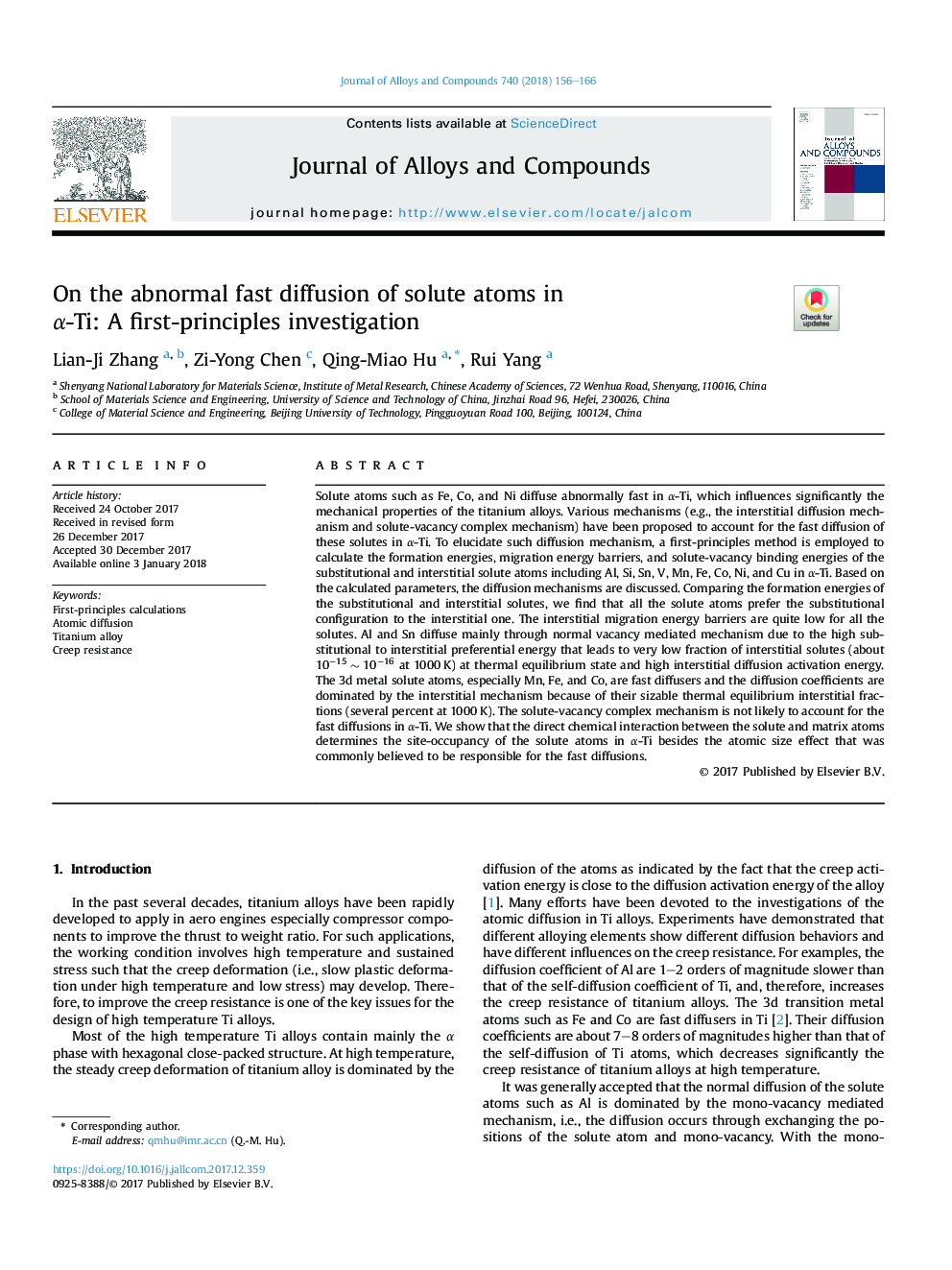| Article ID | Journal | Published Year | Pages | File Type |
|---|---|---|---|---|
| 7993613 | Journal of Alloys and Compounds | 2018 | 11 Pages |
Abstract
Solute atoms such as Fe, Co, and Ni diffuse abnormally fast in α-Ti, which influences significantly the mechanical properties of the titanium alloys. Various mechanisms (e.g., the interstitial diffusion mechanism and solute-vacancy complex mechanism) have been proposed to account for the fast diffusion of these solutes in α-Ti. To elucidate such diffusion mechanism, a first-principles method is employed to calculate the formation energies, migration energy barriers, and solute-vacancy binding energies of the substitutional and interstitial solute atoms including Al, Si, Sn, V, Mn, Fe, Co, Ni, and Cu in α-Ti. Based on the calculated parameters, the diffusion mechanisms are discussed. Comparing the formation energies of the substitutional and interstitial solutes, we find that all the solute atoms prefer the substitutional configuration to the interstitial one. The interstitial migration energy barriers are quite low for all the solutes. Al and Sn diffuse mainly through normal vacancy mediated mechanism due to the high substitutional to interstitial preferential energy that leads to very low fraction of interstitial solutes (about 10â15â¼10â16 at 1000â¯K) at thermal equilibrium state and high interstitial diffusion activation energy. The 3d metal solute atoms, especially Mn, Fe, and Co, are fast diffusers and the diffusion coefficients are dominated by the interstitial mechanism because of their sizable thermal equilibrium interstitial fractions (several percent at 1000â¯K). The solute-vacancy complex mechanism is not likely to account for the fast diffusions in α-Ti. We show that the direct chemical interaction between the solute and matrix atoms determines the site-occupancy of the solute atoms in α-Ti besides the atomic size effect that was commonly believed to be responsible for the fast diffusions.
Related Topics
Physical Sciences and Engineering
Materials Science
Metals and Alloys
Authors
Lian-Ji Zhang, Zi-Yong Chen, Qing-Miao Hu, Rui Yang,
